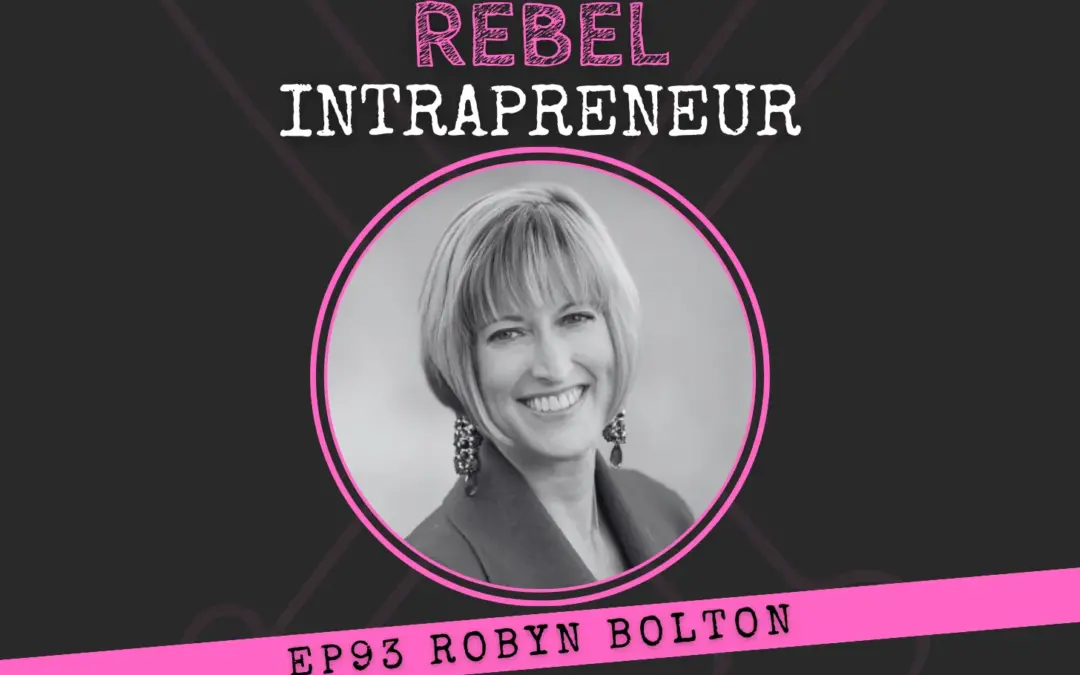
by Robyn Bolton | Mar 5, 2024 | Customer Centricity, Tips, Tricks, & Tools
AI is NOT a substitute for person-to-person discovery conversations or Jobs to be Done interviews.
But it is a freakin’ fantastic place to start…if you do the work before you start.
Get smart about what’s possible
When ChatGPT debuted, I had a lot of fun playing with it, but never once worried that it would replace qualitative research. Deep insights, social and emotional Jobs to be Done, and game-changing surprises only ever emerge through personal conversation. No matter how good the Large Language Model (LLM) is, it can’t tell you how feelings, aspirations, and motivations drive their decisions.
Then I watched JTBD Untangled’s video with Evan Shore, WalMart’s Senior Director of Product for Health & Wellness, sharing the tests, prompts, and results his team used to compare insights from AI and traditional research approaches.
In a few hours, he generated 80% of the insights that took nine months to gather using traditional methods.
Get clear about what you want and need.
Before getting sucked into the latest shiny AI tools, get clear about what you expect the tool to do for you. For example:
- Provide a starting point for research: I used the free version of ChatGPT to build JTBD Canvas 2.0 for four distinct consumer personas. The results weren’t great, but they provided a helpful starting point. I also like Perplexity because even the free version links to sources.
- Conduct qualitative research for me: I haven’t used it yet, but a trusted colleague recommended Outset.ai, a service that promises to get to the Why behind the What because of its ability to “conduct and synthesize video, audio, and text conversations.”
- Synthesize my research and identify insights: An AI platform built explicitly for Jobs to be Done Research? Yes, please! That’s precisely what JobLens claims to be, and while I haven’t used it in a live research project, I’ve been impressed by the results of my experiments. For non-JTBD research, Otter.ai is the original and still my favorite tool for recording, live transcription, and AI-generated summaries and key takeaways.
- Visualize insights: Mural, Miro, and FigJam are the most widely known and used collaborative whiteboards, all offering hundreds of pre-formatted templates for personas, journey maps, and other consumer research templates. Another colleague recently sang the praises of theydo, an AI tool designed specifically for customer journey mapping.
Practice your prompts
“Garbage in. Garbage out.” Has never been truer than with AI. Your prompts determine the accuracy and richness of the insights you’ll get, so don’t wait until you’ve started researching to hone them. If you want to start from scratch, you can learn how to write super-effective prompts here and here. If you’d rather build on someone else’s work, Brian at JobsLens has great prompt resources.
Spend time testing and refining your prompts by using a previous project as a starting point. Because you know what the output should be (or at least the output you got), you can keep refining until you get a prompt that returns what you expect. It can take hours, days, or even weeks to craft effective prompts, but once you have them, you can re-use them for future projects.
Defend your budget
Using AI for customer research will save you time and money, but it is not free. It’s also not just the cost of the subscription or license for your chosen tool(s).
Remember the 80% of insights that AI surfaced in the JTBD Untangled video? The other 20% of insights came solely from in-person conversations but comprised almost 100% of the insights that inspired innovative products and services.
AI can only tell you what everyone already knows. You need to discover what no one knows, but everyone feels. That still takes time, money, and the ability to connect with humans.
Run small experiments before making big promises
People react to change differently. Some will love the idea of using AI for customer research, while others will resist with. Everyone, however, will pounce on any evidence that they’re right. So be prepared. Take advantage of free trials to play with tools. Test tools on friends, family, and colleagues. Then underpromise and overdeliver.
AI is a starting point. It is not the ending point.
I’m curious, have you tried using AI for customer research? What tools have you tried? Which ones do you recommend?

by Robyn Bolton | Mar 3, 2024 | Podcasts

by Robyn Bolton | Feb 27, 2024 | Customer Centricity, Tips, Tricks, & Tools
Unintended consequences often catch us off guard despite their predictability. The moment they occur, we gasp in shock, shake our heads, and look at each other in wide-eyed horror at this thing that just happened that we could never ever ever have anticipated.
Yet, when (if) we do an After-Action Review, we often realize that these consequences were not entirely unforeseeable. In fact, had we anticipated them, we might have made different decisions.
The Unintended Consequences of Spreadsheets
In 1800 BCE, ancient Babylonians started recording data by scratching grids and columns onto clay tablets, and the spreadsheet was born. Over the millennia, we went from clay tablets to papyrus to parchment and then paper.
Fast forward to 1963 when R. Brian Walsh of Marquette University ported the Business Computer Language (BCL) program to an IBM 7040, and electronic spreadsheets became a reality. The introduction of VisiCalc by Apple in 1979 revolutionized spreadsheet capabilities, followed by Lotus 123 and Microsoft Excel. Today, spreadsheets are ubiquitous in education, business operations, financial markets, budgeting, and even personal inventories.
Unintended yet predictable consequences
While spreadsheets have undoubtedly enhanced efficiency and accuracy compared to traditional methods like clay tablets or hand-drawn tables on parchment, their ease of use has inadvertently led to complacency.
We stopped engaging in a multi-millennial habit of discussing, debating, and deciding before making a spreadsheet. We started flippantly asking people to create spreadsheets and providing little, if any, guidance because “it’s easy to make changes and run scenarios.”
This shift resulted in a reliance on automated models and a lack of shared assumptions or analytical rigor in decision-making processes.
Of course, these behaviors were never intended. They were, however, very predictable.
Research spanning disciplines as varied as network scientists, anthropology, neuropsychology, and paleontology shines a light on how truly predictable we are.
Here are some examples:
Emotions before Reason: Ask someone if they make decisions based on their motivations, aspirations, and fears and use data to justify the decisions, and they’ll tell you no. Ask them the last time someone else made a decision that “made no sense,” and you’ll listen to a long list of examples.
Small gains now are better than big gains later: Thoughtfully planning before using solutions like spreadsheets, word processing, email, and instant messaging could save us time at work and help us get home 30 minutes earlier or work a few hours less on the weekend. But saving a few seconds now by brain-dumping into Word, setting up a “flexible” spreadsheet, and firing off a text feels much better.
Confidence > Realism: We’ve all been in meetings where the loudest voice or the most senior person’s opinion carried the day. As we follow their lead, we ignore signs that we’re wrong and explain away unexpected and foreboding outcomes until we either wake up to our mistakes or adjust to our new circumstances.
Predict the 93%. Create for the 7%
Acknowledging the predictability of human behavior is not an endorsement of stereotypes but a recognition of our innate cognitive processes. By incorporating this understanding into design, innovation, and decision-making processes, we better anticipate potential outcomes and mitigate unintended consequences.
While 93% of human behavior may follow predictable patterns rooted in evolutionary instincts, focusing on the remaining 7% allows for the exploration of unique behaviors and novel solutions. By embracing both aspects of human nature, we can navigate challenges more effectively and anticipate a broader range of outcomes in our endeavors, leading to informed decision-making and value creation.
Now, if I could only get Excel to stop auto-converting numbers into date/time format.

by Robyn Bolton | Feb 22, 2024 | Podcasts

by Robyn Bolton | Feb 21, 2024 | Innovation, Stories & Examples, Tips, Tricks, & Tools
You want to make life better for others. This desire is reflected in the optimism and positivity of your language – create value, love the problem, and delight the customer. But making life better requires change, and, as the adage goes, “People want change, but they don’t want to be changed.”
You are confident that the solution you created will make life better and that the change people need to make is quite small and painless, well worth the dramatic improvement you offer. Yet they resist. No amount of explaining, showing, convincing, or cajoling changes their mind. What else can you do?
To quote Darth Vader, “Give yourself to the Dark Side. It is the only way to save your friends.”
“If only you knew the power of the Dark Side…”
The Dark Side is populated by “negative” emotions like anger, fear, and frustration, which are incredibly powerful.
Consider that:
Unfortunately, these are also some of the first emotions experienced when confronting change.
Change requires people to let go of what they know in exchange for the promise of something better. This immediately triggers Loss Aversion, the cognitive bias in which the pain of losing is psychologically twice as powerful as the pleasure of gaining.
As a result, people won’t let go of what they know until the pain of holding on becomes unbearable. When you point out the problems and pain of the current situation, you help people understand and experience the unbearableness of the current situation.
“Anger, fear, aggression; the Dark Side of the Force are they”
Not every “negative” emotion elicits the same behavior, so carefully choose the one to tap into.
Fear motivates people to seek safety, which can be good if your solution truly offers a safer alternative. It’s a motivator used well by companies such as Volvo, SimpliSafe, and Graco. But lean on it too much, and people may feel overwhelmed and remain frozen to the status quo.
Anger motivates people to take risks, which can be good when the change requires bold decisions and dogged persistence. It can be great when it bonds people together to achieve a shared goal or protect a common value. Apple used this emotion to brilliant effect in its famous “1984” commercial announcing the launch of Macintosh. But incite too much anger, and things can get broken and not in a helpful way like Apple’s ad.
Frustration, one of the emotions that often drives aggression, is anger’s polite little sister. When people feel frustrated, they’re likely to act, persistently pursue solutions, and creatively approach and overcome obstacles. But if the change is big, feels scary, and puts their sense of self at risk, frustration isn’t powerful enough to convince people to let go of the old and embrace the new.
“If you start down the dark path, forever will it dominate your destiny.”
Yoda is incredibly wise, but he gets this one wrong. Using the Dark Side to speak to people’s “negative” emotions doesn’t doom you to a life or career of fear-mongering or inciting violence. Start here, don’t stay here.
Multiple research studies show that positive emotions, like hope and joy, are more powerful than negative ones in maintaining motivation and even enable more creative thinking and problem-solving. By speaking to both negative and positive emotions, the Dark Side and the Light, you enable change by giving people a reason to let go of the past and a future worth reaching for.
When people stop resisting and start reaching to the future you’re offering, change happens, and you realize that Yoda was right, “Luminous beings are we, not this crude matter.”




